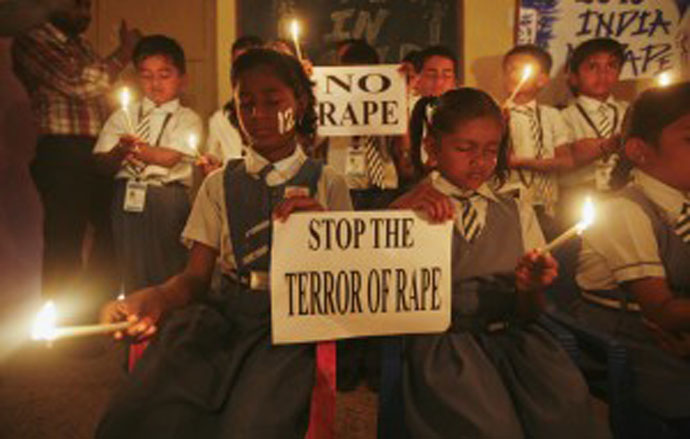A 3-year-old was raped inside bus in Kolkata: Why we aren't being able to save our children

There are moments when I seem to be in serious doubts - doubts about my own level of tolerance, doubts about the intensity of feelings of the people, my people, around. Are we getting comfortably numb? Are we losing all our abilities to get angry over how child safety is being severely compromised every other day at every possible place?
Is it that we become accustomed with them day by day, so much so that even the nastiest stories of rapes and sexual abuses of children utterly fail to arouse any emotion anymore? Isn’t it still the time when we just stop talking, and start walking the talk?
As the recent Kolkata incident of the rape of a three-year-old girl child inside an empty bus comes into media headlines, it brings back exactly the same sinking feeling that we had five years back, when the Nirbhaya case shook the core of the Indian psyche.
It’s definitely not the fact that no other incidents of child rape happened in between - it’s rather just the opposite, as many equally brutal cases were reported almost on a regular basis - but the uncanny similarity about the scene of the two incidents and the modus operandi of the crime is what brings back the shiver.
When such a brutal incident happens with a child, it indeed fills our heart with immense grief and anger. In India, every fifth minute there is an occurrence of crime against children.
A close look at the NCRB data over the past one decade not only vouches for the fact that children are the most vulnerable across most of the social spaces, but also goes on to establish that the rate of crimes against children is increasing real fast. More specific calculations suggest that the growth rate of crime against children actually witnessed a spike of 500 per cent over the past 10 years.

Further analysis of the nature of crimes reveals that kidnapping and child rape are the two categories under which maximum number of crime against children were reported. These revelations are indeed scary, especially if we keep it in mind that even though reporting of cases has increased in recent times, not all of them have come into the news as a result of the age-old culture of silence.
Going beyond this specific case in Kolkata, we should also keep it in mind that children are not only vulnerable at unsupervised environments, they can be violated within very protective/"safe" spaces as well. If we remember the recent cases of the Ryan International School incident at Gurgaon or the one that happened in GD Birla School in Kolkata, we know how the school campus turned out unsafe place for those children. From our experiences as well as available data we know that the domestic environment is also not always safe for children, as a number of sexual assaults of girls do happen at home, and often the perpetrators are quite known to them, in many cases are relatives of the victims. Today the fact of the matter is that children are not completely safe anywhere - any place ranging from an anganwadi centre to a private play school, crèche, day care centre, parks, neighbourhood play areas and other social institutions.
This brings us to the next logical question that is, is child protection only a simple process which can be fixed with ensuring some minimum required protocol in place, or is it about range of things starting from empowering children themselves to establishing clear accountabilities?
The answer seems to be equally evident, it is about awareness building, empowering children, prevention, timely response/action and in cases of violation a decisive stringent action by duty-bearers involving punitive action followed by speedy settlement of case.
At the same time there are fundamental deep-rooted issues which need to resolve. Parents from the most impoverished background will have to go out of their houses for livelihood and their children would need care and assistance. Universalisation of provision of crèches thus becomes extremely essential.
It is time to invest early with children and internalise values and principles which break notions of power and patriarchy to enable them to be responsible humans, and to make them understand that violence is not the way.
We need to systematically work with parent groups as well. Child safety is not taken seriously, neither it is properly understood, among communities at large. Building vigilant mechanisms at public spaces, and empowering communities to take ownership of the same is something which we as a society need to evolve.
This issue needs urgent attention - now more than ever and that too from everyone - state, parents, teachers, community at large and every other duty-bearer. It is about taking action now. It is also about increasing the budgets for child protection issues. It is about placing child protection into central narrative and discourse. It is about making sure we as a society develop zero-tolerance to any kind of violence against children. It is a massive challenge in front of us to keep our children safe. We owe it to our children to make their spaces safe.

